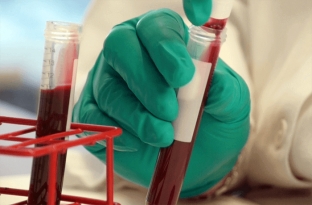Willebrand disease – This is a type of hereditary hemorrhagic diathesis, which is caused by a violation of blood clotting against the background of a decrease in the activity or insufficiency of the von Willebrand factor. von Willebrand factor is involved in the process of platelet adhesion and protects factor VIII of blood coagulation from proteolysis. With a deficiency of von Willebrand factor VIII, the factor undergoes proteolysis, which contributes to its decrease in blood plasma. Under what circumstances is the synthesis and function of the von Willebrand factor disrupted? How does this affect the blood clotting process?
Types of von Willebrand disease according to quantity and quality of von Willebrand factor
Willebrand disease has several types: it is the classic type of the course of the disease (type 1), variant forms (type 2), severe form (type 3) and platelet type.
1 type is characterized by a quantitative decrease in the level of the von Willebrand factor. This is the most common type of disease, occurring in 80% of cases.
2 type is accompanied by qualitative lesions of the von Willebrand factor at its normal level in blood plasma. Such changes develop against the background of a deficiency or absence of medium molecular weight oligomers, impaired binding and inactivation of the von Willebrand factor, or a decrease in the activity of ristomycin – cofactor activity.
3 type is accompanied by a complete absence of von Willebrand factor in plasma, the activity of factor VIII is significantly reduced.
The platelet type is called pseudovon Willebrand disease and is characterized by a normal amount of von Willebrand factor against the background of its increased binding to altered platelet receptors.

Role of von Willebrand factor in blood coagulation
The main cause of von Willebrand disease is a quantitative and qualitative impairment of the synthesis of von Willebrand factor, which is manifested by bleeding and bruising on the skin. Factor is a complex plasma glycoprotein secreted by vascular endothelial cells and megakaryocytes as a protein. Entering the subendothelial matrix and blood, the factor is deposited in a-granules of platelets and Weibl's bodies – Pallas.
Willebrand factor is actively involved in vascular – platelet and in coagulation homeostasis, that is, in primary and secondary homeostasis.
Von Willebrand factor is a subunit of coagulation factor VIII, which provides its protection against proteolysis and premature inactivation.
With the help of the von Willebrand factor, adhesion of platelets from platelets to endothelial structures occurs, as well as platelet aggregation among themselves in places of vascular damage. The concentration of von Willebrand factor in the blood in the normal state is 10 mg/L.
Temporary increases in von Willebrand factor levels are possible under the following conditions:
- stressful situations;
- pregnancy;
- physical activity;
- taking estrogen;
- infectious processes with inflammation.
A constitutional decrease in the von Willebrand factor was found in people with blood type 1.
Willebrand factor gene mutation – cause of hereditary von Willebrand disease
A mutation on chromosome 12 of the von Willebrand factor gene contributes to the development of a genetic pathology called von Willebrand disease. Pathology types 1 and 2 are inherited in an autosomal manner – dominant type with incomplete penetrance, inheritance of type 3 disease occurs autosomal – recessive type, in which patients are homozygous. At the same time, both parents of the patient have a mild course of von Willebrand disease type 1.
von Willebrand disease can occur in the course of life as a complication after multiple blood transfusions, against the background of systemic or cardiac pathologies, oncological processes.
At the same time, antibodies against von Willebrand factor are formed, or absorption of oligomers by tumor cells occurs.
For more information about the manifestations of von Willebrand disease and treatment options, read our next article.







Add a comment